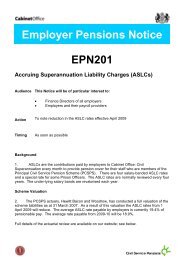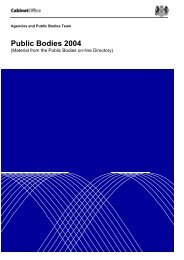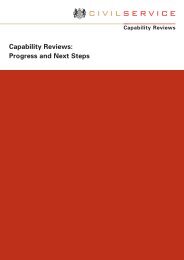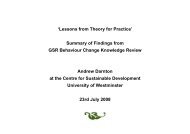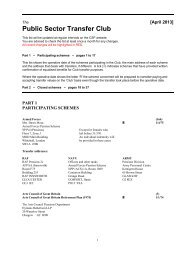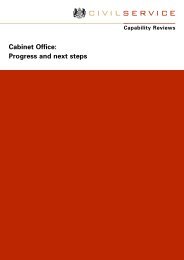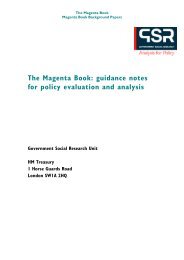Cultural Diversity - The Civil Service
Cultural Diversity - The Civil Service
Cultural Diversity - The Civil Service
You also want an ePaper? Increase the reach of your titles
YUMPU automatically turns print PDFs into web optimized ePapers that Google loves.
Land Registry <strong>Cultural</strong> <strong>Diversity</strong>PunjabiPunjabi is spoken in the historic state of the Punjab which was split between India andPakistan after partition. <strong>The</strong>re are some 60 million speakers in Pakistan and 15 millionin India. As a result of its geographic position, there are a number of influences on thespoken language, the eastern parts of the province favouring a Hindi influence, with agrowing Urdu influence the further west one moves. <strong>The</strong> written language can useeither a Perso-Arabic script or a Sanskrit-influenced Gurmukhi script, the latter beingthe more commonly used amongst Punjabi speakers in Britain.Punjabi has traditionally been identified with the Sikh religion. <strong>The</strong>re are, however,many Muslims and Hindus who also speak Punjabi.Although it can be useful to split UK subcontinentals into five language speaking groups,the situation is not as simple as this might imply. Most people have an understanding ofmore than one language and consequently the process of cross-fertilisation between thelanguages is particularly rich. <strong>The</strong>re are many unofficial borrowings form one language toanother, of words and even of scripts. A person who can speak Urdu but who is unableto write it, for example, will very often simply write his message using the Hindi script!<strong>The</strong> influence of local dialect can complicate matters further; there are, for example, anumber of different dialects of Gujarati and it can be difficult when translating tochoose the most appropriate language for UK Gujarati speakers. <strong>The</strong> dialect spokenin the Sylhet region of Bangladesh is so distinct that there is a movement to regard itas a separate language, though as yet it has no written script. In Pakistan the Lahndadialect of Punjabi is in a similar situation.<strong>The</strong> impressive degree of multilingualism amongst these communities is a little moreunderstandable, once it is realised that all five languages are from the same linguisticfamily – the Indic languages, which are a branch of the Indo-European group fromwhich most European languages are derived. Consequently, many common or similarwords occur in all five languages.While many words have a root common to each language, many of them are alsostrikingly similar to English or European words. Also, not surprisingly, a growing numberof English words have become part of the language used by Indic communities inBritain. Words relating to aspects of British life and culture, for which the terms whichexist in the language do not quite capture the context – “bus”, “nurse”, “fax” forexample – are common coinage amongst the Indic language speakers in this country.Finally, there are words of Indic origin which were assimilated into the Englishlanguage long before the arrival of the first immigrants to the UK from thesubcontinent – words such as catamaran, bazaar, caravan, khaki, cot, loot, thug,dungaree, pundit, juggernaut. <strong>The</strong> process of cross-fertilisation between languages isa long-standing and ongoing one, one that enriches cultures and contributes to thechanging nature of language itself.33






